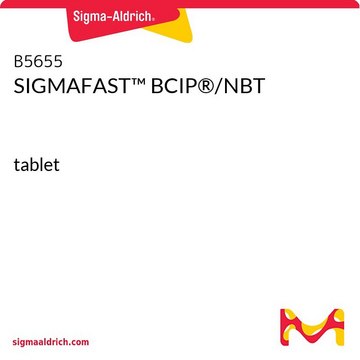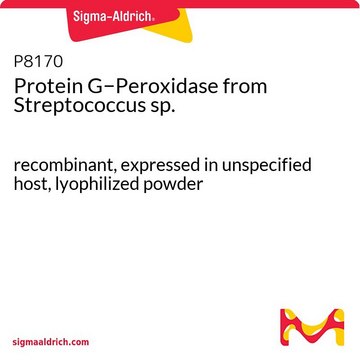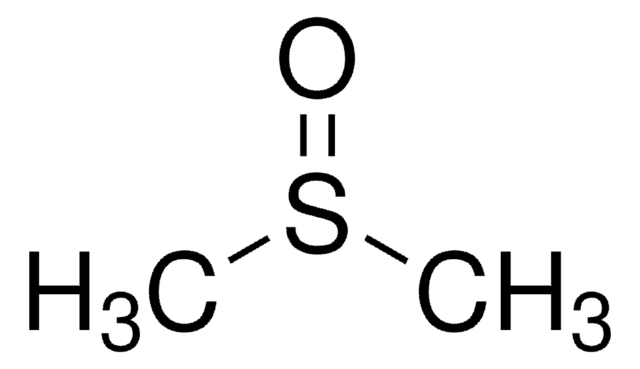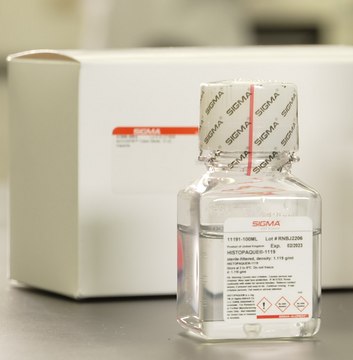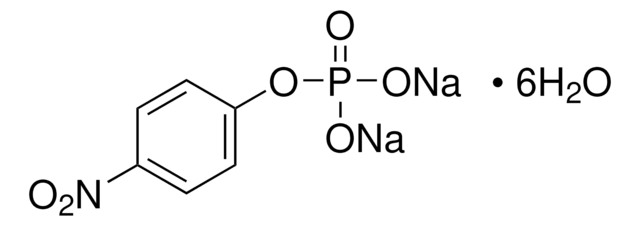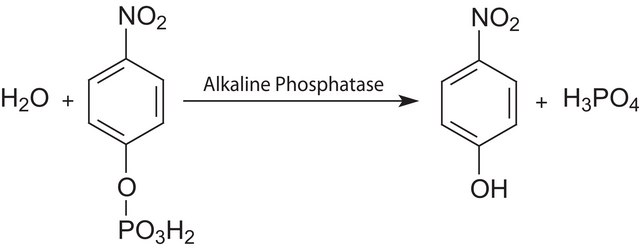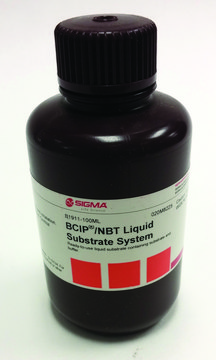Recommended Products
form
liquid
Quality Level
contains
≤0.1% sodium azide as preservative
manufacturer/tradename
Calbiochem®
storage condition
do not freeze
shipped in
wet ice
storage temp.
2-8°C
General description
Protein G conjugated to alkaline phosphatase. Does not react with IgA, IgE, or IgM.
Protein G, Alkaline Phosphatase Conjugate is obtained by conjugation of protein G, a cell-surface protein of Streptococcus species to alkaline phosphatase. This conjugate is used as a secondary agent in immunoassay methods to detect polyclonal goat and rabbit antibodies and monoclonal mouse IgG1, IgG2a, and IgG2b.
Application
Protein G, Alkaline Phosphatase Conjugate has been used in:
- direct enzyme-linked immunosorbent assay (ELISA) (1:1000)(1:250)
- indirect ELISA (1:1000)
- immunoblot (1:5000)
Packaging
Please refer to vial label for lot-specific concentration.
Warning
Toxicity: Standard Handling (A)
Physical form
In 50 mM Tris buffer, 1 mM MgCl₂, 0.1 mM ZnCl₂, 1% BSA, 0.1% sodium azide, pH 7.6.
Analysis Note
Single band at 33.8 kDa by SDS-PAGE
Other Notes
p-Nitrophenyl phosphate, 1.0 mg/ml in 10% diethanolamine, pH 9.8, 1 mM MgCl2 at 25°C, was used as substrate to test immunoenzyme reactivity. Variables associated with assay conditions will dictate the proper working dilution.
Legal Information
CALBIOCHEM is a registered trademark of Merck KGaA, Darmstadt, Germany
Storage Class Code
11 - Combustible Solids
WGK
WGK 1
Flash Point(F)
Not applicable
Flash Point(C)
Not applicable
Certificates of Analysis (COA)
Search for Certificates of Analysis (COA) by entering the products Lot/Batch Number. Lot and Batch Numbers can be found on a product’s label following the words ‘Lot’ or ‘Batch’.
Already Own This Product?
Find documentation for the products that you have recently purchased in the Document Library.
B Nilson et al.
Journal of immunoassay, 9(2), 207-225 (1988-01-01)
Protein G, an IgG-binding protein, purified from the surface of group G streptococci, was coupled to alkaline phosphatase. The conjugate was used for detection of polyclonal goat and rabbit antibodies and monoclonal mouse IgG1, IgG2a and IgG2b in an enzyme-linked
S Sun et al.
Journal of immunological methods, 152(1), 43-48 (1992-07-31)
The IgG binding domains of staphylococcal protein A and streptococcal protein G were expressed as a chimaera using the pGEX vector which has been advocated because its fusion proteins tend to be soluble and easily isolated on immobilised glutathione. This
A O Olarinmoye et al.
Epidemiology and infection, 145(10), 2030-2037 (2017-05-10)
The hamadryas baboon (Papio hamadryas hamadryas) is the only indigenous species of non-human primates (NHP) found in the Kingdom of Saudi Arabia (KSA). There are no peer-reviewed publications on viral infections of the baboons of KSA. Apart from camels, other
Anja Reckendorf et al.
International journal for parasitology. Parasites and wildlife, 14, 53-61 (2021-01-26)
Pseudaliid lungworm (Metastrongyloidea) infections and associated secondary bacterial infections may severely affect the health status of harbour porpoises (Phocoena phocoena) in German waters. The presented retrospective analysis including data from 259 harbour porpoises stranded between 2006 and 2018 on the
Lisa D MacDonald et al.
Human vaccines & immunotherapeutics, 14(1), 59-66 (2017-09-22)
Peptide antigens are combined with an adjuvant in order to increase immunogenicity in vivo. The immunogenicity and safety of a RSV vaccine formulated in a novel oil-based platform, DepoVax™ (DPX), was compared to an alum formulation. A peptide B cell
Our team of scientists has experience in all areas of research including Life Science, Material Science, Chemical Synthesis, Chromatography, Analytical and many others.
Contact Technical Service
